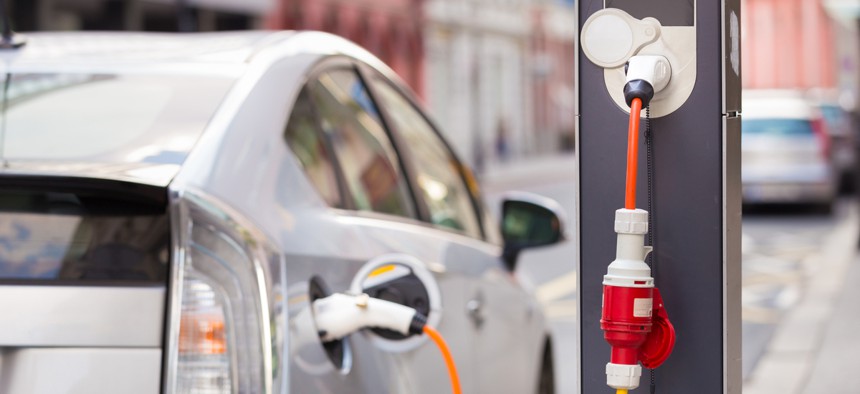Why Agencies Aren’t Buying More Electric Vehicles

Matej Kastelic/Shutterstock.com
Federal fleets are getting more energy-efficient, but officials said electric vehicles aren’t viable at this time.
Federal agencies were under a mandate to purchase more alternative-fuel vehicles by 2017 in order to reduce emissions, but costs, lack of supporting infrastructure and low availability of larger vehicles have kept the government’s electric vehicle fleet small.
Agencies purchased almost 100,000 alternative fuel vehicles between 2008 and 2017, though the vast majority have been flex-fuel vehicles that can use traditional gasoline, as well as biofuels, according to a report from the Government Accountability Office. Those purchases are helping agencies meet a 2017 deadline to buy more vehicles that either don’t use gasoline or use it efficiently and reduce per-mile greenhouse gas emissions.
Those requirements were revoked by executive order in May 2018. But GAO was able to do an analysis of agencies’ efforts prior to the order.
In fiscal 2017, agencies bought more than 16,000 sedans and minivans, according to data from the General Services Administration. Of those, 4,500 were hybrid electric sedans, while only 373 were pure electric vehicles—both sedans and minivans. Agency officials told GAO that they wanted to buy more electric vehicles, but price, availability of charging stations and limitations on size were hampering those efforts.
“While hybrid and electric vehicles can offer reductions in petroleum use and greenhouse gas emissions, the costs of these vehicles and their charging infrastructure make it challenging for agencies to acquire them on a large scale,” GAO analysts wrote. “In total, agencies spent about $10.5 million more to purchase hybrid or electric vehicles than they would have to purchase comparably sized conventionally fueled vehicles.”

Along with cost and infrastructure challenges, “agency officials stated that a continuing need for larger vehicles limits the number of low greenhouse-gas-emitting vehicles agencies can acquire,” the report states.
Agencies were not purchasing as many electric vehicles in the runup to the 2017 deadline, though most were able to meet the requirements “by changing the mix of vehicles acquired and improving fleet management,” according to GAO.
While an executive order removed some of the requirements for agencies, subsequent guidance from the Office of Management and Budget and the Council on Environmental Quality reaffirmed the commitment to alternative fuels, just not specific kinds.
“The implementing instructions emphasized that agencies should focus on the statutory requirements while increasing efficiency, optimizing performance and reducing waste and costs,” GAO pointed out. “The guidance particularly emphasized agencies’ focus on reducing petroleum use and increasing alternative fuel consumption. The guidance did not mention the extent to which agencies should continue to acquire any specific type of alternative fuel vehicle.”






